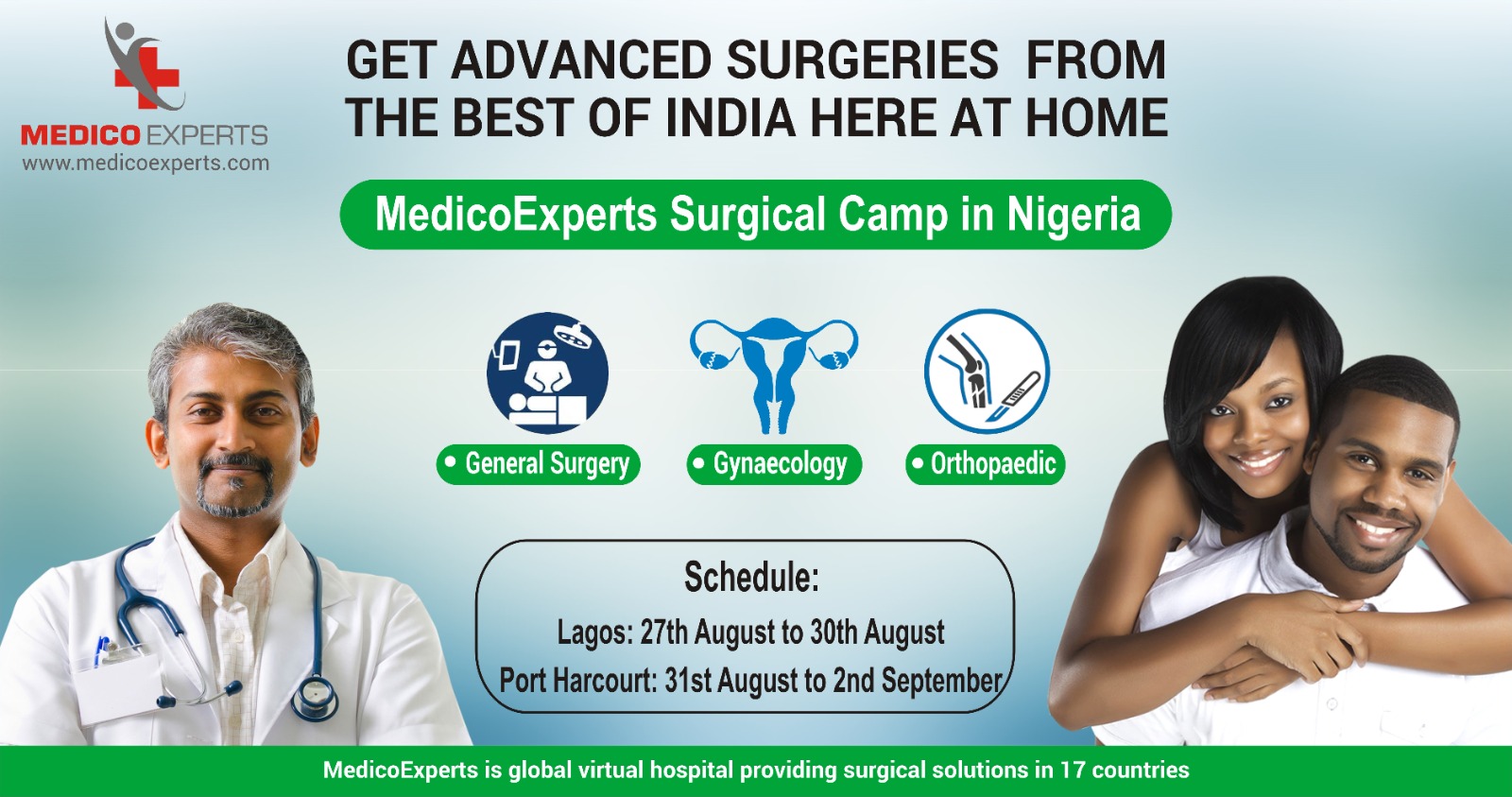Stem cells – A reliable cure option for myotonic dystrophy treatment in India
Are you aware that early onset and late onset myotonic dystrophy both are curable with stem cell therapy?
Early onset and late onset myotonic muscular dystrophy both have unique symptoms and are challenging to treat. You may be confused about the treatment of these two types of the same disease.
But, stem cell therapy is a unique and effective treatment strategy for all types of myotonic muscular dystrophy. Most of your symptoms will get reduced by applying this therapy at the right time.
Let us know how Mr. Robin got cured of his myotonic dystrophy symptoms
Mr. Robin was happily living with his son and grandson and was planning a vacation to enjoy his retired life.
But, one Sunday he was going to the church and needed to lock the house door.
He properly locked all the windows, but when he tried to close the doorknob, his hand got fixed and he could not remove the grip from the lock.
It was his son John who somehow forced his father’s hand to loosen and saved his father from intense pain.
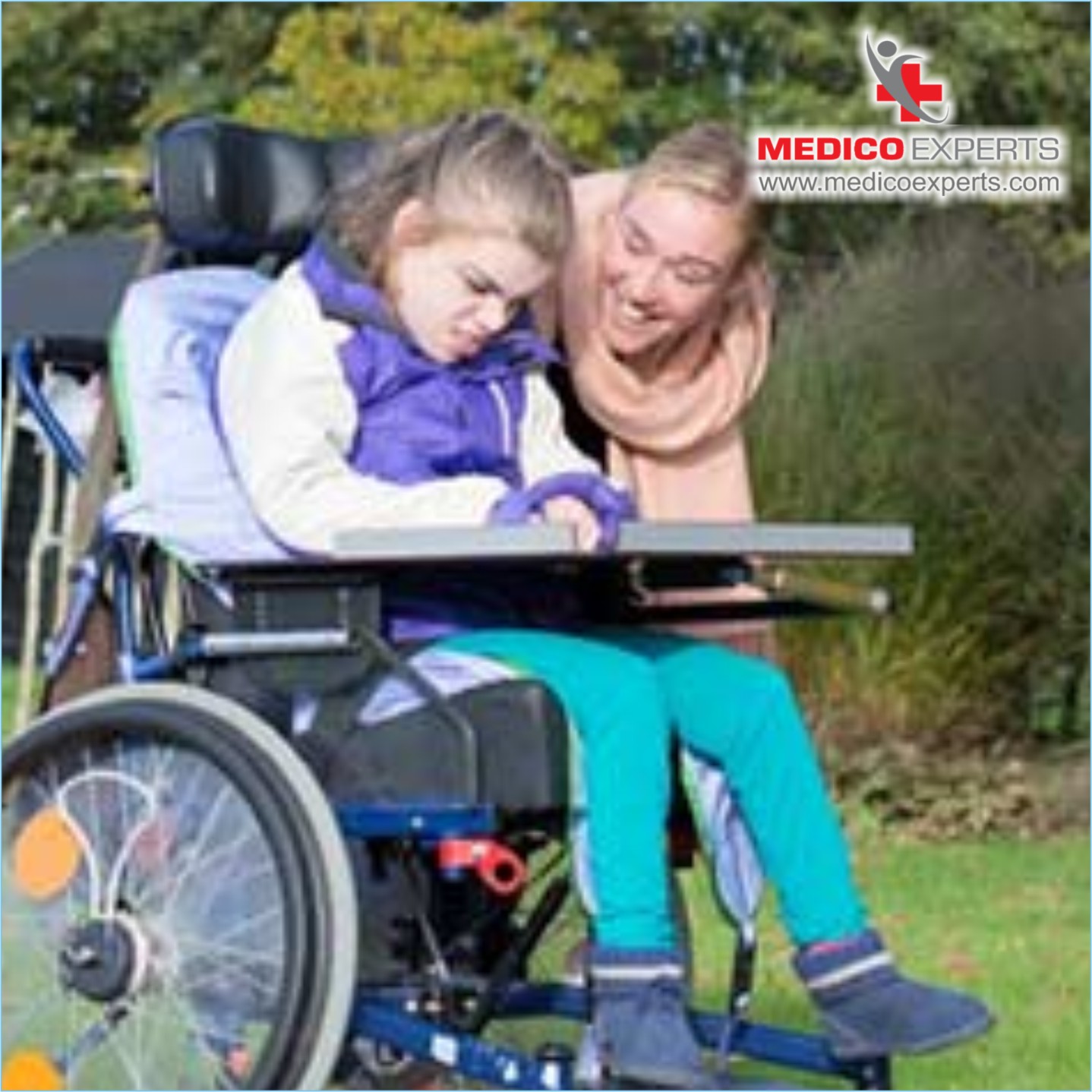
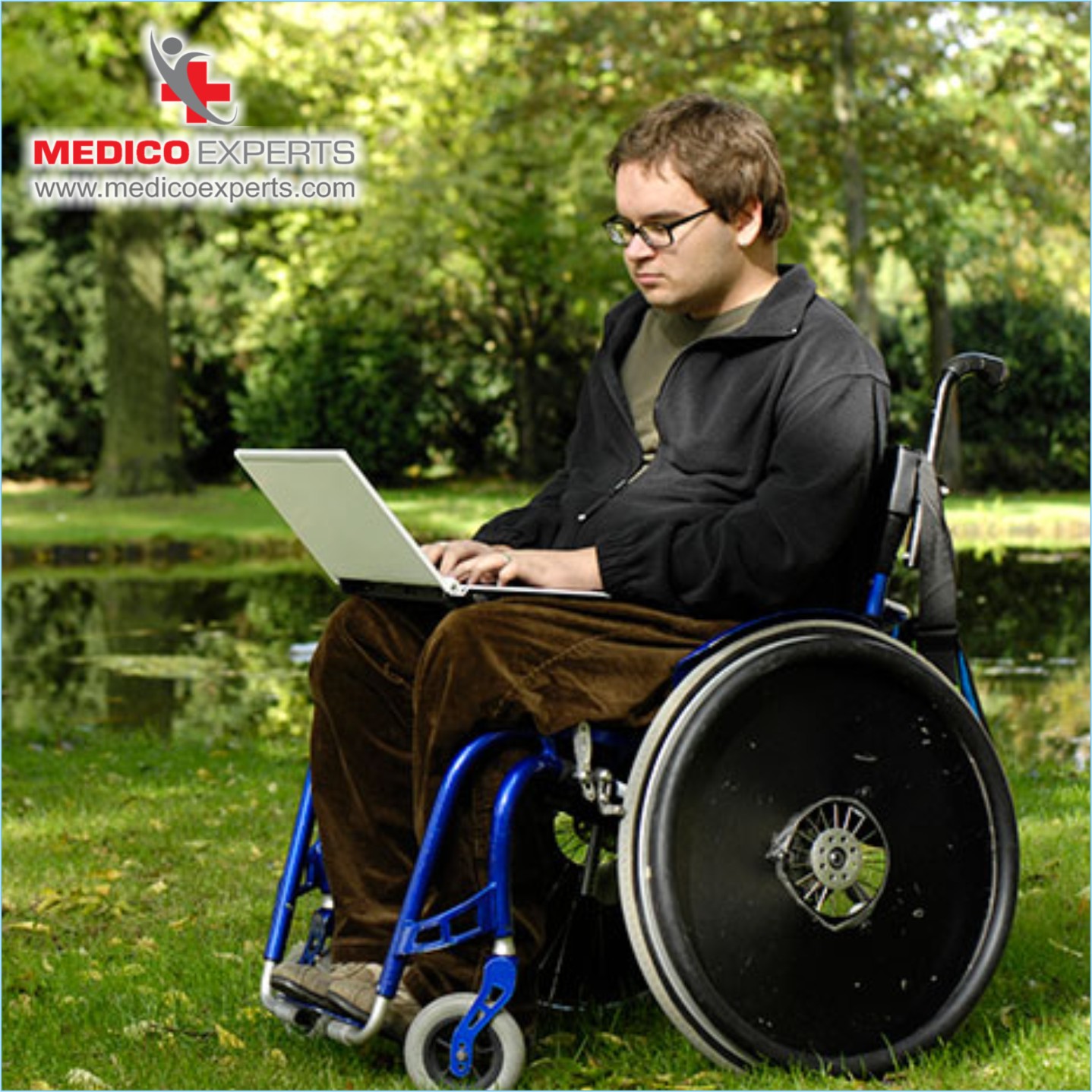
A few days after this incident, Robin was having difficulty walking. He had pain and stiffness in his toe.
His son took him to the doctor who had difficulty in diagnosing the disease. He prescribed a lot of tests and was also told to do a muscle biopsy of the hand.
Robin was detected with classical myotonic dystrophy. Although the disease was not causing any survival problems for him, he wanted to live an active life.
The doctor said that occupational therapy can help but cannot permanently cure the symptoms.
John told his father that he would like to contact MedicoExperts in India as they are pioneers in muscular dystrophy treatment using stem cell therapy.
Robin came to India and underwent several cycles of stem cell therapy.
His symptoms got reduced and he was able to live an active life again.
The family thanked MedicoExperts and doctors for their help.
Before we get into the treatment, let us first understand myotonic dystrophy in some detail.
What is myotonic dystrophy?
Myotonic dystrophy is a progressive muscle stiffness disorder with symptoms of muscle weakness, wasting, and prolonged contractions.
It affects the skeletal muscles, cardiac muscles, eyes, nervous system, and endocrine system.
Let us see how many types of myotonic dystrophy are there.
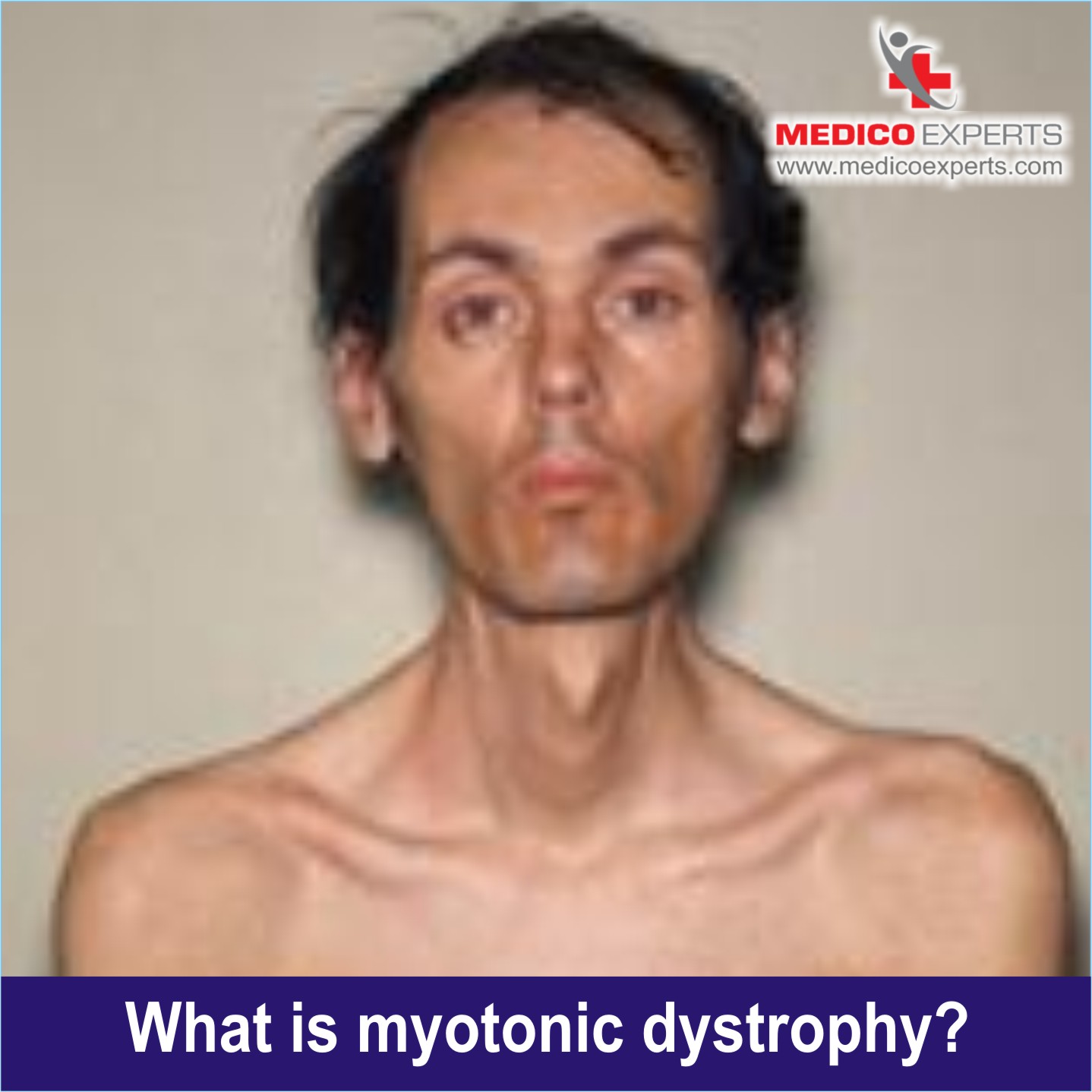
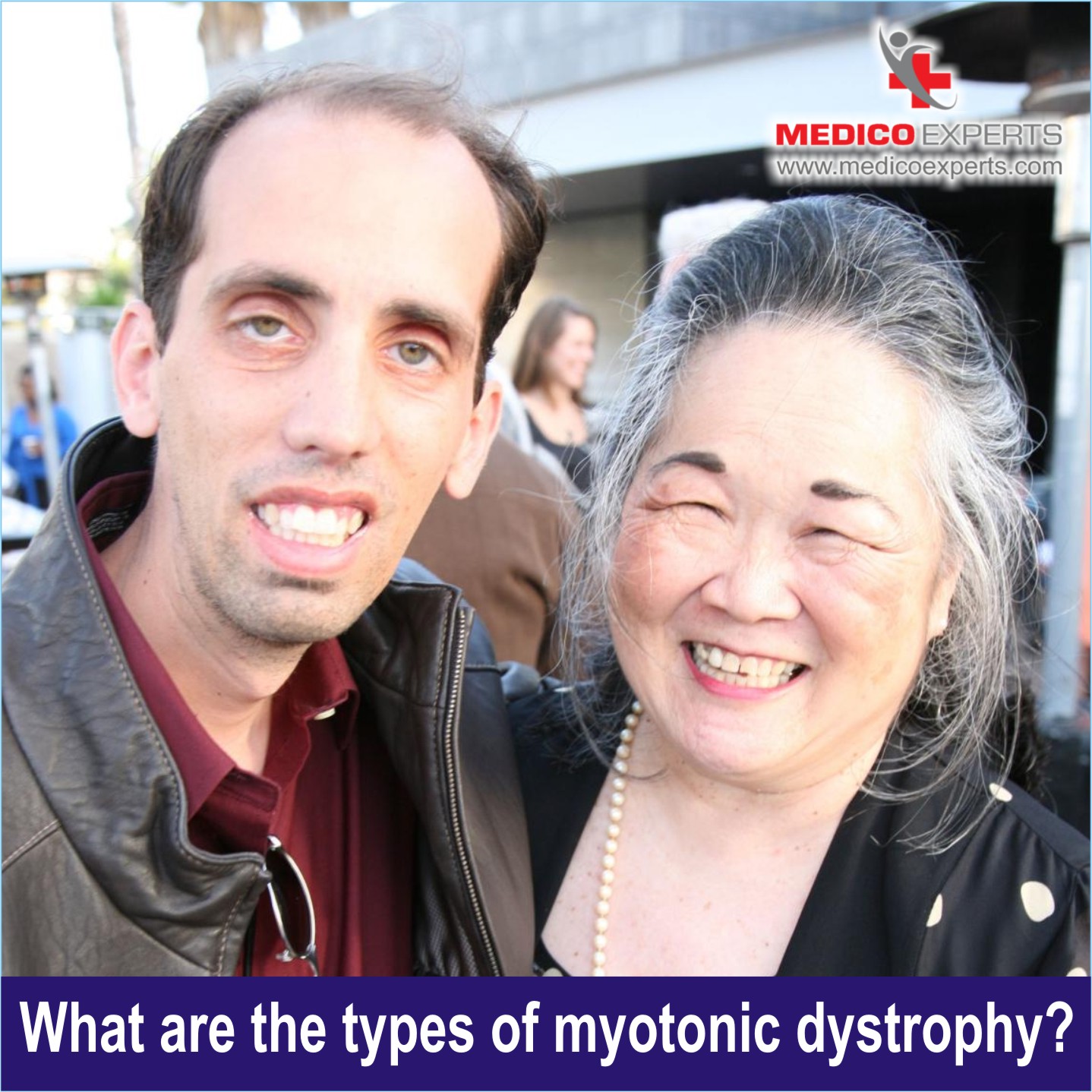
What are the types of myotonic dystrophy?
There are two main types of myotonic dystrophy –
- Steinert disease Myotonic dystrophy or Type 1
- Proximal Myotonic Dystrophy or Type 2
Proximal myotonic dystrophy is less severe than Steinert’s disease.
The steinert disease can further be classified into classic, mild, congenital, and childhood myotonic dystrophy.
Let us understand what age groups are affected by myotonic dystrophy.
What age group is affected by myotonic dystrophy?
Age group affected by Steinert disease Myotonic dystrophy or Type 1
- Classic myotonic dystrophy – This begins in the 20s, 30s, or in 40s.
- Mild myotonic dystrophy – This starts after the age of 40 years and is mild in nature.
- Congenital myotonic dystrophy – This is present from the time of birth
- Childhood Myotonic Dystrophy – This starts at the age of 10 of a child
Age group affected by Type 2 Myotonic Dystrophy
- The onset of the disease is at 48 years.
Let us get an idea about the incidence of myotonic dystrophy in the population
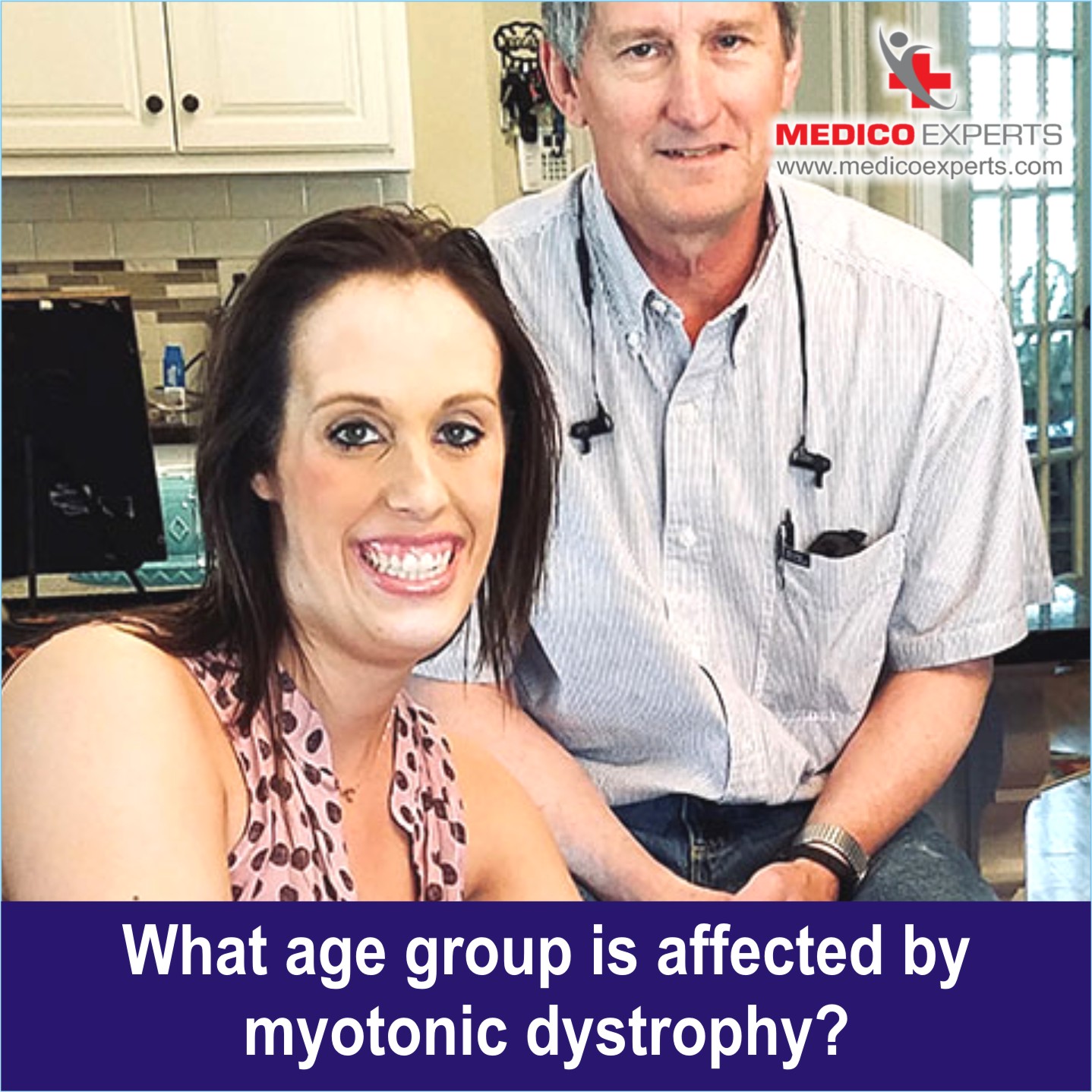
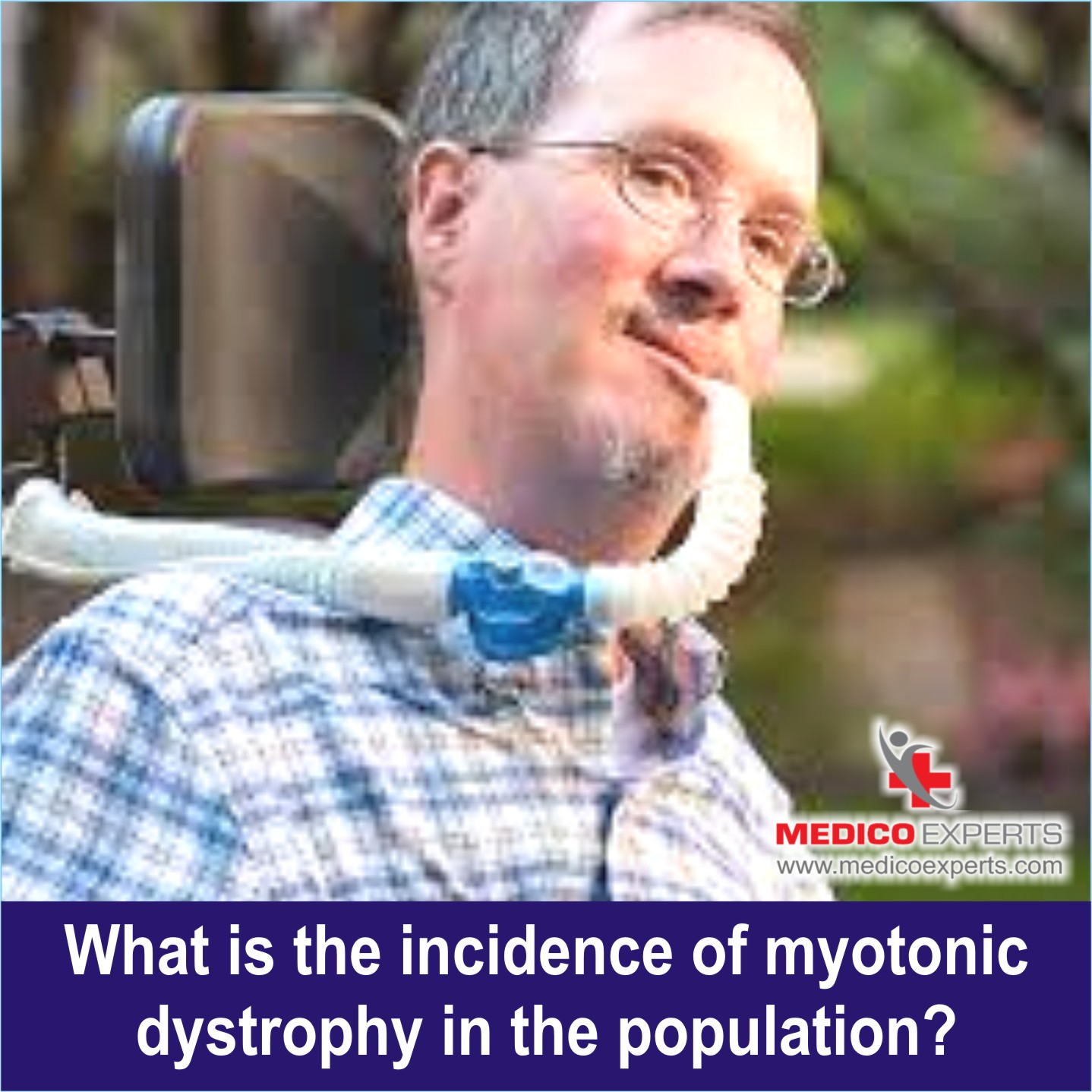
What is the incidence of myotonic dystrophy in the population?
The affected persons ratio is 1 in 8000 people across the world. Type 1 is more common than type 2 myotonic dystrophy.
Symptoms of Steinert disease Myotonic dystrophy or Type 1
- Muscle weakness in the skeletal muscles away from the center of the body that is on the hand. Once a door knob is held for opening the door, it is difficult to remove the hand.
- Problem with toe muscles and abnormal steps while walking.
- Irregularities in heart muscle contraction and relaxation.
- A thin face because of muscle weakness in the face
Symptoms of the mild type include
- Mild muscle weakness
- Cataract
- Myotonia ( prolonged muscle contraction)
- Abnormal or less fetal movement in the uterus
- Accumulation of excess cerebrospinal fluid in the brain
- Excess amniotic fluid at the time of pregnancy
After birth the symptoms include
- Lack of proper speech
- Intellectual disability
- Distortion of the upper lip due to weak facial muscles
Symptoms of childhood myotonic dystrophy include
- Learning and intellectual disability
- Hand muscle weakness
- Heart muscle abnormality
Symptoms of Myotonic dystrophy type 2
- It has the following symptoms –
- Weakness in the muscles closer to the center of the body
- Early onset of cataract at the age of 50
- Muscle contraction in hand muscle creates grip problems
- Hearing problem
- Facial muscle weakness
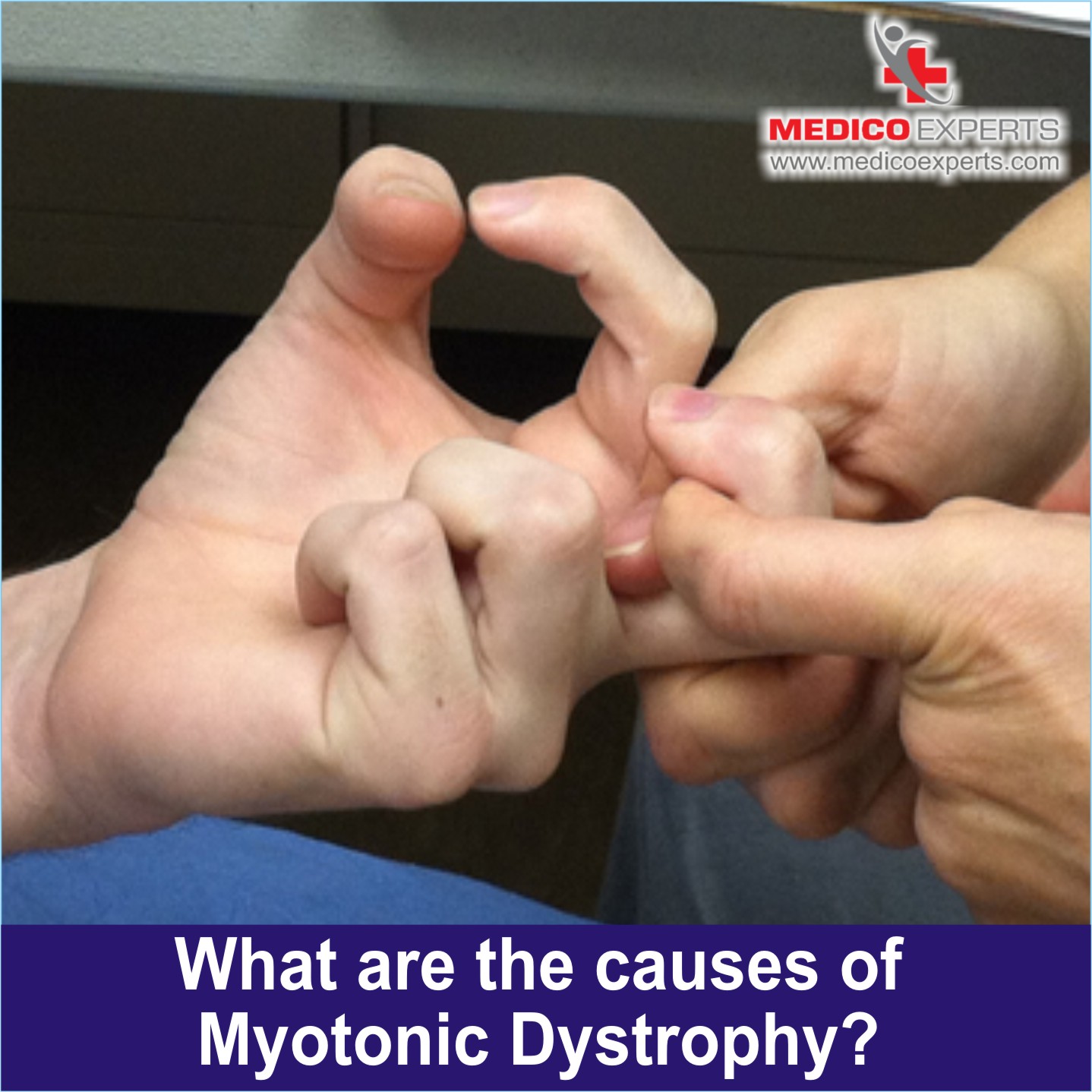
What are the causes of Myotonic Dystrophy?
The gene changes or mutation in the DMPK gene causes type 1 myotonic dystrophy whereas the mutation in the CNBP gene causes myotonic dystrophy type 2.
It is the mutation in the genes that form defective messenger RNA from the gene (gene product). The defective messenger RNA can form defective proteins in the cell, leading to myotonic dystrophy.
The inheritance of the gene from the parents is autosomal dominant type, meaning that even if one copy of the gene is passed from either mother or the father, then the disease will be caused. Myotonic dystrophy condition can be caused by the presence of only one copy of the gene.
How is myotonic dystrophy diagnosed?
When you go to the physician for a diagnosis, the doctor will ask for
- Family history of myotonic dystrophy.
- Your symptoms
Based on that, the doctor may prescribe a battery of tests including checking the mutations in the DMPK and CNBP genes.
Apart from this, the doctor will also recommend the following tests
- Creatine kinase test – This enzyme is elevated in the blood if the skeletal and heart muscles are damaged. Therefore, it is an indicator of muscular problems including myotonic dystrophy.
- Electromyocardiogram – Electrical conductivity of the muscles is checked by passing a fine needle electrode into the muscles. If the electromyogram shows too many abnormalities, then a muscle disease can be predicted.
- Muscle biopsy involves taking a small piece of muscle and testing for abnormal myotonic dystrophy genes.
- Electrocardiogram – This involves checking the activity of the heart and the cardiac rhythms.
- Pulmonary Function test – This involves checking the nerve and muscle activity related to the lungs.
Let us have some idea about conventional treatment for myotonic dystrophy
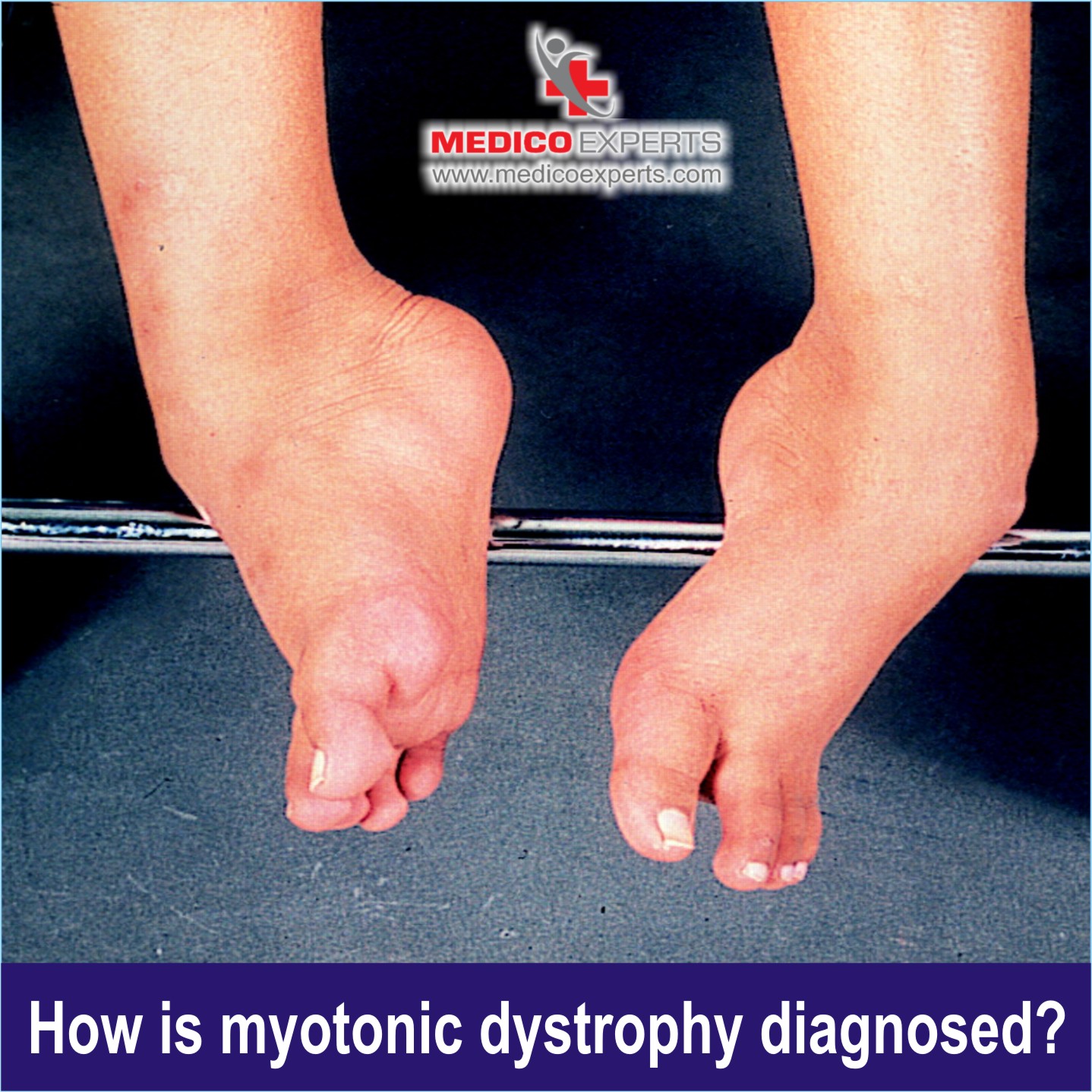
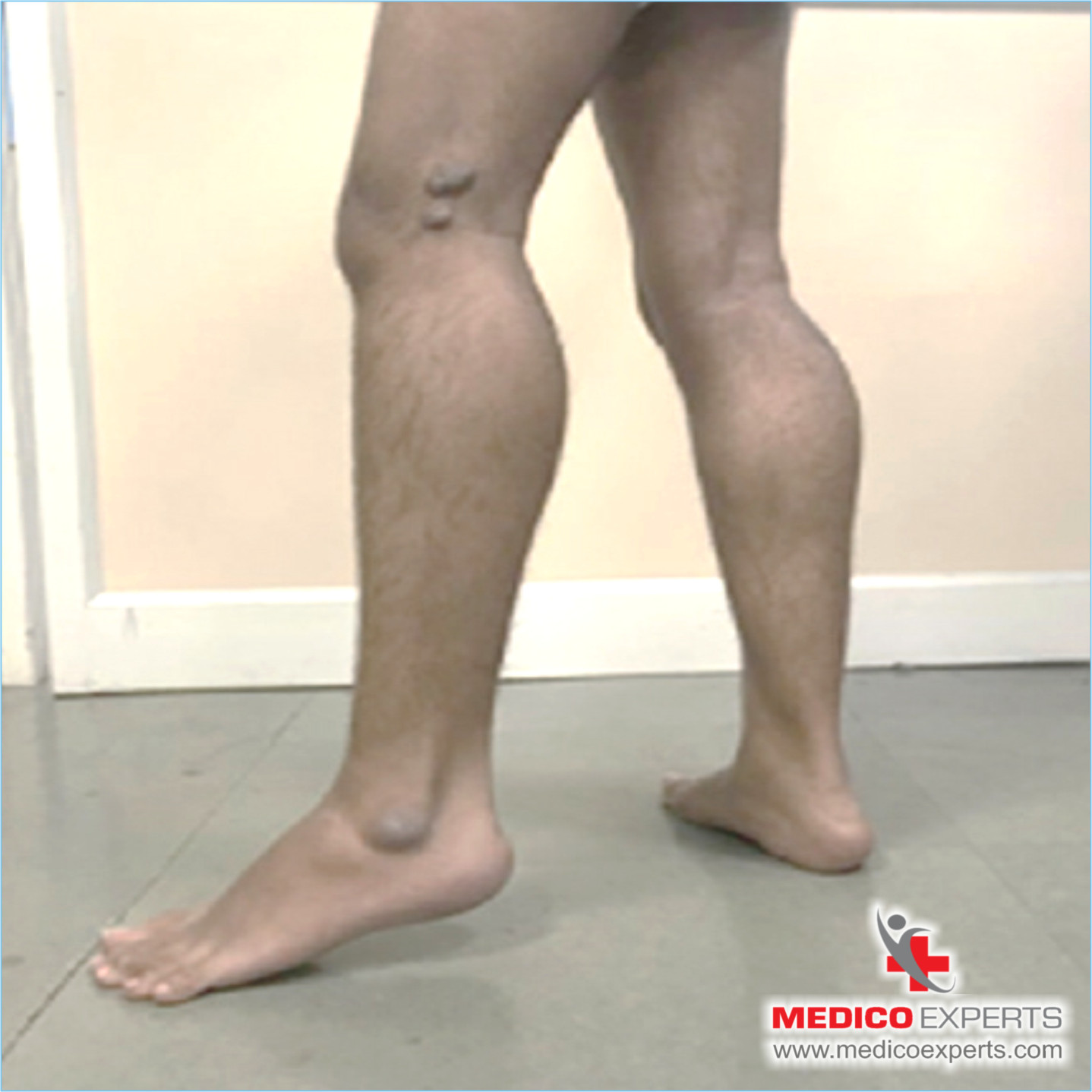
Is there a way to prevent myotonic dystrophy?
Myotonic dystrophy is a genetic condition, but there are steps to manage its impact. It is possible to have genetic counseling for a risk assessment in the next generation. With proper diagnosis at an early stage and appropriate treatment, such as physical therapy, drugs, and lifestyle modification, life can be easier.
If you or a family member requires advice, contact MedicoExperts today. You don’t have to go through this by yourself.
What are the conventional treatment options available for Myotonic Dystrophy?
Medicines, surgery, and occupational therapy are some of the conventional treatment options.
Medicines – Sodium channel blockers, anti-depressants, and calcium antagonists are some of the medicines for this kind of dystrophy
Cataract Surgery – For certain types of myotonic dystrophy, cataracts be surgically treated
Neurostimulants – To treat a daytime sleep disorder, neurostimulators can be used
Testosterone– Synthetic testosterone can be used to treat myotonic dystrophy in a male who has erectile dysfunction
Occupational therapy – Physical therapy and occupational therapy will try to treat myotonic dystrophy through various types of exercises and activities. Speech therapy can be used to treat swallowing problems and speaking problems.
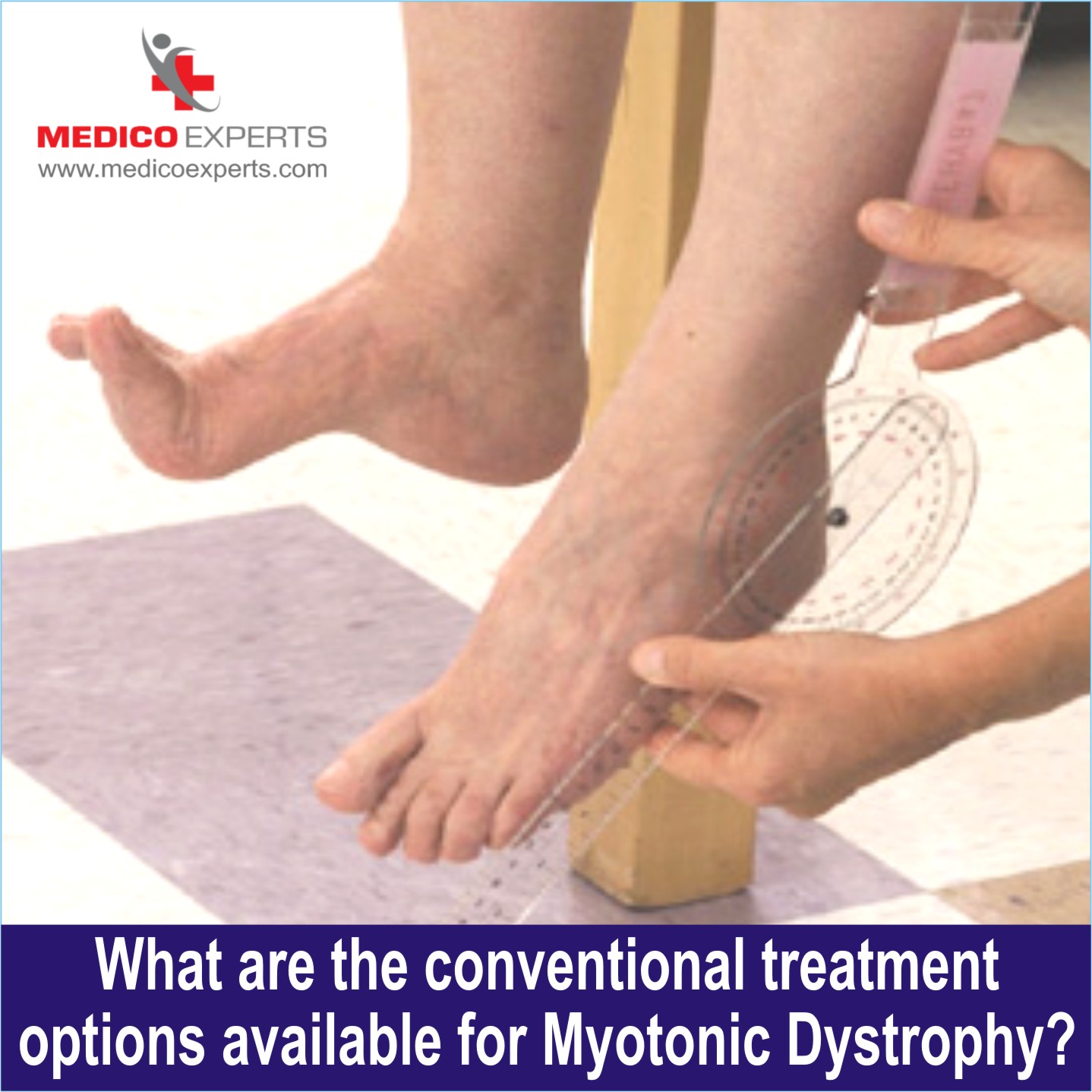
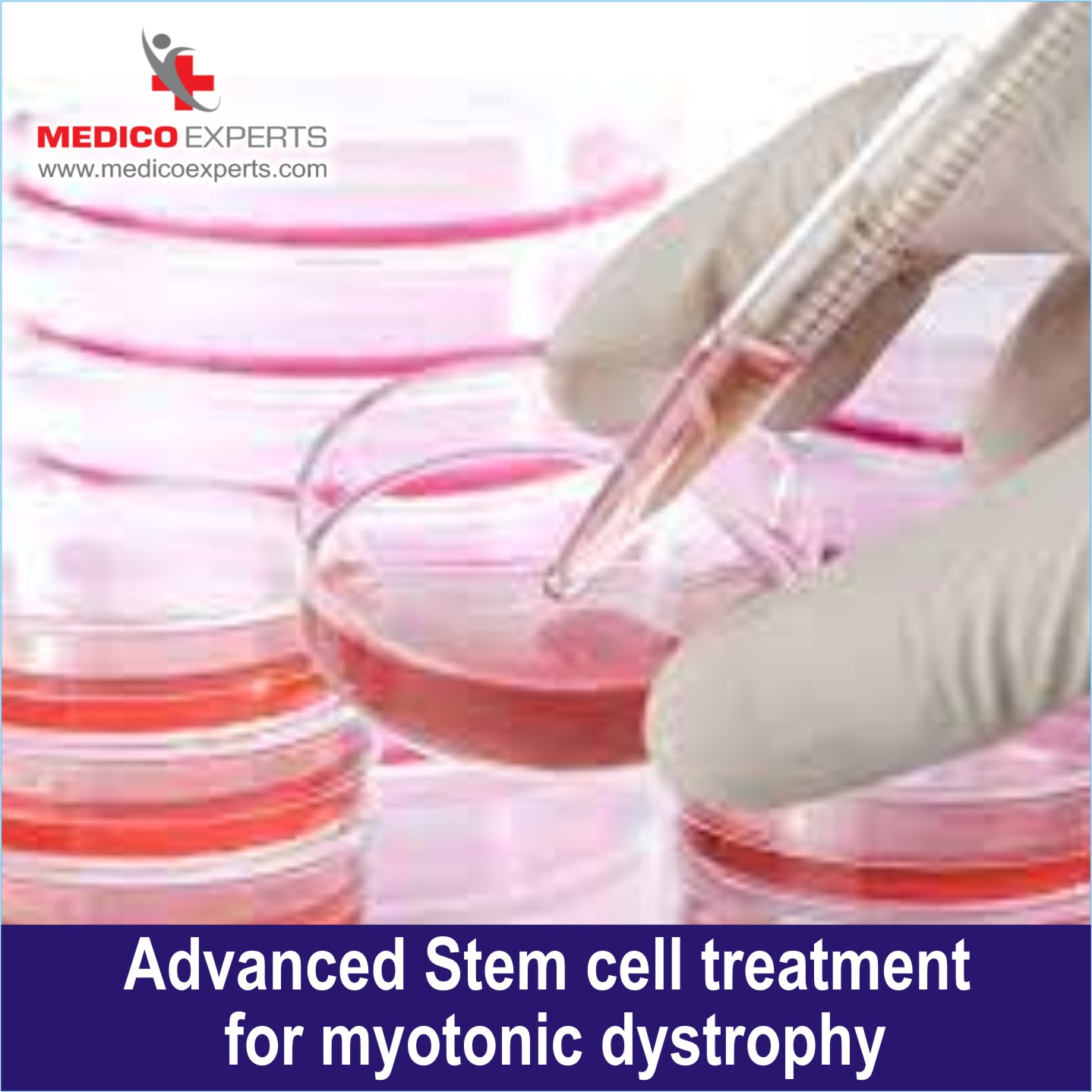
Advanced Stem cell treatment for myotonic dystrophy
Stem cells isolated from the bone marrow can produce myogenic cells in the presence of various stimulants and growth factors. The newly formed muscle cells can provide huge benefits for the patients and help to relieve their symptoms. Stem cell therapy is an advanced treatment for Myotonic Dystrophy and other types of genetic myopathy therapy, offering relief from muscle stiffness and weakness.
New muscle cells derived from injected stem cells can reduce the symptoms of prolonged muscle contraction, muscle weakness, and fatigue. The patients will be able to perform daily tasks as their hand and leg muscles would begin to function normally.
Stem cells can be an ideal choice both for adult-onset and childhood-onset myotonic dystrophy as the new cells will immediately heal the damaged muscle cells in the body.
Benefits of Stem cell treatment for myotonic dystrophy
Stem cell therapy has the potential to cure intellectual disability, in childhood myotonic dystrophy. It can also be useful in treating muscular weakness and heart problems in Type 2 myotonic dystrophy.
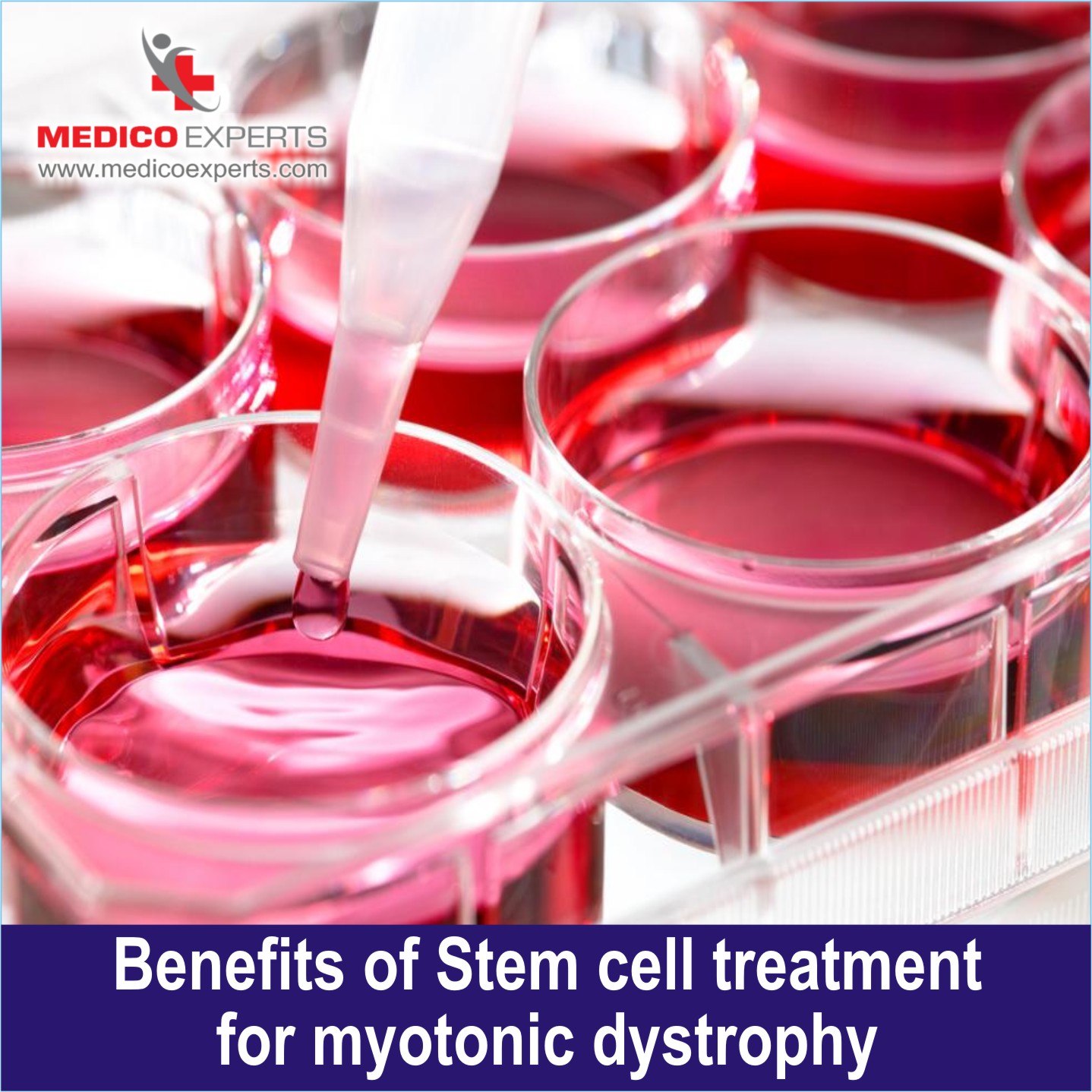
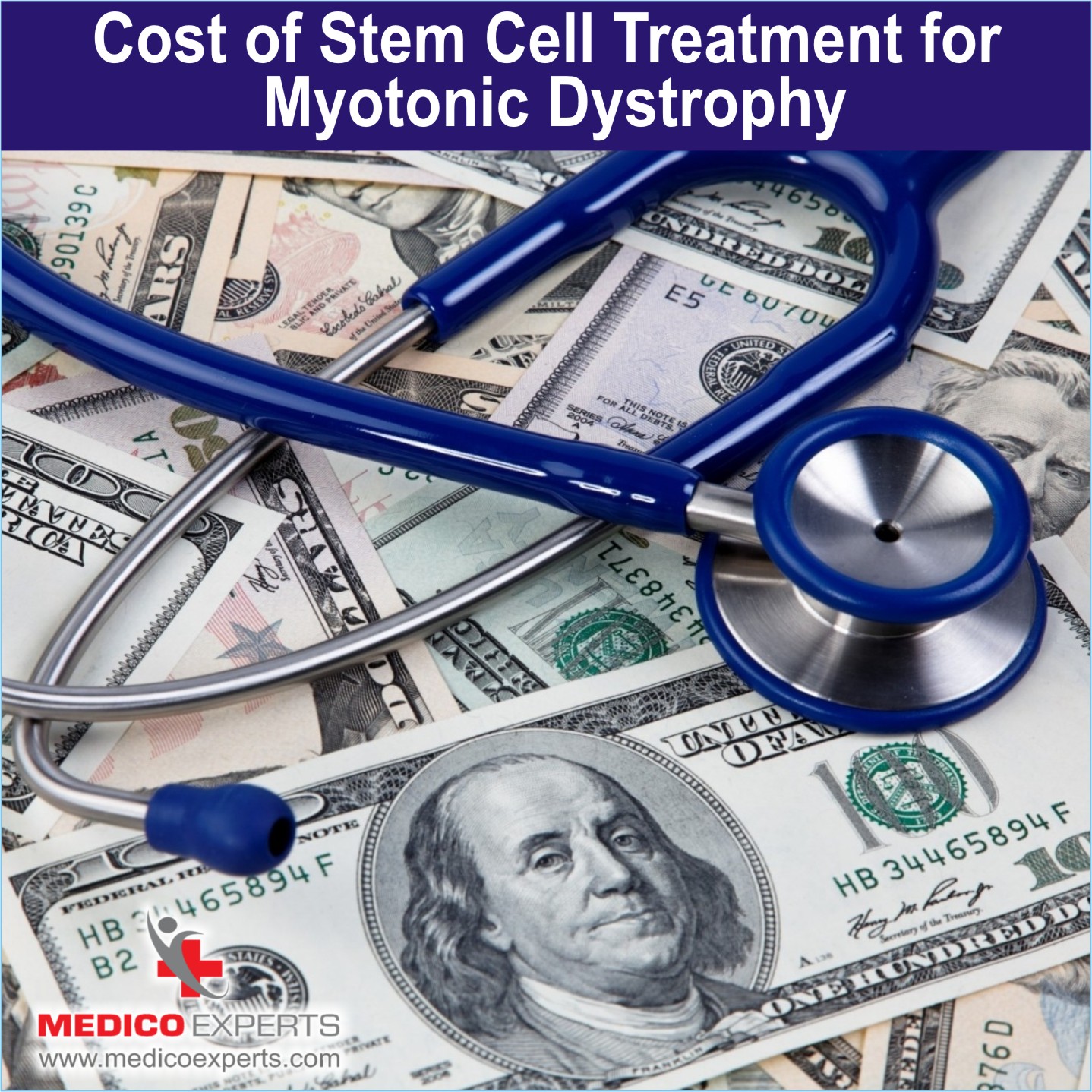
Cost of Stem Cell Treatment for Myotonic Dystrophy
The cost of stem cell therapy for myotonic dystrophy treatment in India starts from USD 2000 per cycle, depending on the patient’s current condition, treating doctor, and suggested treatment protocol.
How long can a person with myotonic dystrophy live?
The lifespan of a person with myotonic dystrophy is based on the severity and type of condition.
Congenital Myotonic Dystrophy (DM1): It is the most critical one, and a few of them do not live into early childhood. Some do suffer from serious medical problems, and about 50% do not live past the age of 30.
Adult-Onset Myotonic Dystrophy (DM1): Most people survive into their 50s or 60s, although other conditions such as heart or lung problems can reduce life expectancy.
Myotonic Dystrophy Type 2 (DM2): Less severe than DM1, with most individuals surviving into their 70s, near the average lifespan.
Whereas myotonic dystrophy may affect life span, appropriate medical care and treatment of Myotonic Dystrophy treatments, like stem cell therapy and lifestyle management, can truly make a difference in saving lives. The severity of this condition varies from person to person—some of you might only deal with mild symptoms, while others face more complex challenges. But here’s the good news for you! Lifestyle management can play a huge role in improving your overall well-being. Simple steps like regular physical therapy, a nutritious diet, good sleep habits, breathing exercises, cardiac check-ups, and stress control can all help you feel better and stay healthier.
If you have the mild variant, you might not see any impact on your life expectancy—you can lead a normal and productive life with the right medical care. But in severe cases, complications affecting the heart or lungs can arise. That’s why early diagnosis and ongoing monitoring are so important. Treatments like physical therapy, medication, and lifestyle changes can help manage symptoms and boost your overall health.
If you or someone you care about is affected, staying on top of medical treatments and check-ups can make all the difference. Taking proactive steps now can help ensure a longer, healthier life. You’re not alone—speak with a medical professional for advice and assistance.


When is the right time to consult a doctor about myotonic dystrophy?
If you find your muscles are weak, stiff, or tense and difficult to relax, it’s a good idea to go for a doctor’s examination. Early detection of myotonic dystrophy can decrease symptoms significantly and enhance the quality of life. Don’t wait if something doesn’t seem right—get a consultation with a healthcare professional today.
Conclusion
Myotonic dystrophy is a progressive disease and therefore early intervention by stem cells can reduce the manifestations of the symptoms to a great extent.
You should take appropriate actions as early as possible because complete damage to the cardiac muscles can cause heart attack and reduce the survival time of the patients. Particularly, for congenital myotonic dystrophy it is important to take fast action as the survival rate post 30 years is only 50%.
Medicoexperts is a 24*7 virtual global hospital involved in treating various forms of muscular dystrophy.
The virtual hospital board consists of doctors from different specialties including stem cell therapy and orthopedics. Myotonic muscular dystrophy which is a challenging disease to treat in children and adults can be successfully treated using modern technologies like advanced stem cell therapy in large hospitals and clinics.
Frequently Asked Questions (FAQs):
Q1. What causes myotonic dystrophy?
Genetic mutations can cause myotonic dystrophy.
Q2. Is myotonic dystrophy life-threatening?
Myotonic dystrophy is not life-threatening but one cannot live an active life.
Q3. What is the current status of stem cell therapy from the regulatory framework?
The stem cell-based therapy is in the research phase and has not yet been formally approved by ICMR. However, the application of stem cells, popularly known as bone marrow transplants, in blood-related disorders is approved by ICMR.
Next in Types of Muscular Dystrophy

Author Bio:
Dr. Khushbu Jain is a dedicated professional with a passion for advancing healthcare through cutting-edge treatments. She has a special interest in researching regenerative medicine and advanced treatment for diseases that are difficult to treat with conventional treatment options. Her deep understanding of these progressive treatments allows her to offer patients personalized and effective solutions for a variety of health concerns.
Content Medically Reviewed By MedicoExperts Editorial & Clinically Review Board



